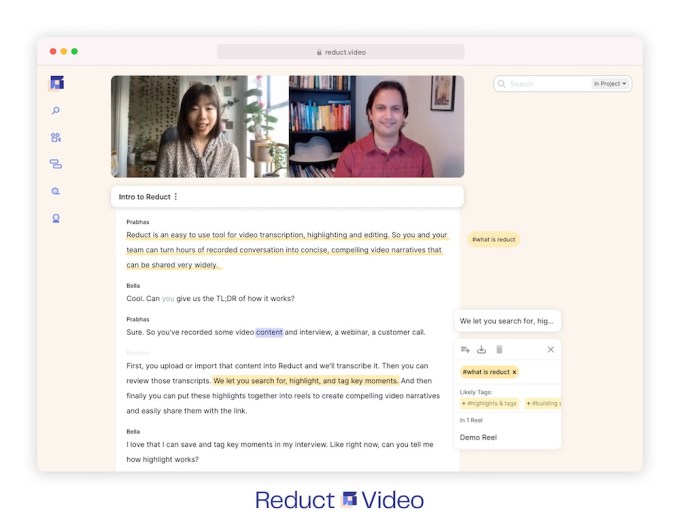TikTok has crafted a number of policies over the years to distance itself from the often-messy political fray, but its users continue to have other agendas in mind.
In Russia, a tug-of-war has emerged on the social network.
On one side are young people using the app to create videos in support of free speech, rallying the public against the government and its treatment of Alexander Navalny, the anti-Putin, anti-corruption politician and activist.
On the other is a government that has quickly versed itself in the art of video messaging — tapping and allegedly paying influencers to dissuade the masses from joining them.
Navalny’s long-term battle with Putin’s government has included political run-ins, imprisonments and a poisoning (with an evacuation to Germany to heal), followed by a return to Russia, subsequent arrest and conviction for violating a previous parole.
Through all of that, Navalny has taken on the mantle of anti-authoritarian hero. With many already unhappy about how the government is handling a weak economy and COVID-19 — a situation that has shaken (but, apparently, not completely toppled) government approval ratings — Navalny’s call for mass protests has been met with a strong response.
And as those protests unfold, TikTok is shaping up to be the scrappy social media analogue of that activity — not unlike the prominent role that Twitter took on during the Arab Spring.
“Political content is not typical for Russian TikTok,’’ said food blogger Egor Khodasevich, whose @kushat_hochu account has 1.2 million followers on the app. “Before Navalny’s return, Russian TikTok was all about dancing, pranks and post-Soviet trash aesthetics. All of a sudden, political videos have started to appear across all categories — humour, beauty, sport.’’
Now, in a significant turnaround, Russian content on the app is being flooded with catchy videos of teenagers cutting their passports in half and throwing them away, pupils taking down portraits of Putin and swapping them with those of Navalny, and others creating how-to’s for would-be protestors — advising them to wear warm clothes, to equip themselves with water and power banks and, if arrested, to pretend they are foreign.
These are pooling around hashtags like #23января (January 23, the date of one of the biggest protests so far) and #занавального (“For Navalny”).
The wave of videos even got shout-outs from Navalny himself — fittingly, not on TikTok, but Instagram, where he praised the TikTok activists for helping get the word and the crowds out.
“Respect to the schoolchildren who, according to my lawyer, caused a frenzy on TikTok,” he noted on one post. Later he poked fun at how the TikTok protest videos were described as “fakes” planted by dastardly Americans.
Russia as a country has a small but fast-growing and vocal group of TikTok users.
Figures provided to us from SensorTower estimate that of the more than 2.66 billion times to date globally that TikTok has been downloaded (a figure that includes its Chinese version Douyin), it has been installed about 93.6 million times in Russia (figures that don’t count third-party Android stores, direct downloads or sideloads).
A report in the Moscow Times from the end of December estimates that there are around 20 million active users in the country, more than double the 8 million it had at the end of 2019. TikTok itself does not disclose current MAUs in Russia or globally, but analysts have projected that the company is on track to pass 1 billion MAUs sometime in the early part of this year.
Even with those sub-100 million numbers, videos with the Navalny hashtag have passed 1 billion views on the platform (as of the time of publishing, the number of views has passed 1.6 billion).
The Empire Strikes Back…
But Russia is nothing if not persistent when it comes to being ahead of the game in tech, and it has been harnessing the media world in a couple of ways in aid of its own ends.
State television and other state media outlets strongly encouraged people to stay away from protests, citing issues like public safety, the spread of Covid-19, and the threat of arrest (one they followed through on: authorities have carried out controversial mass arrests of hundreds of people at these gatherings).
At the same time, attention turned to social media, and in particular TikTok.
Roskomnadzor first confirmed that it would fine all major social media platforms up to 4 million rubles ($54,000) over protest-related content, citing that “these Internet platforms failed to remove a total of 170 illegal appeals in a timely manner.”
It then followed that up with an order to the management teams of TikTok, Facebook, Telegram and Vkontakte to appear at the regulators’ offices to explain why they have not yet removed offending videos, reminding them that failure to comply will mean that fines will be increased to 10% of a company’s annual revenues, dangling the threat that non-compliance could mean services get blocked.
With TikTokers claiming they were being called in by the police after their videos were taken down, TikTok more directly started to get threatened with fines by the regulator in the wake of all this.
As with previous moves to censor online platforms, investigators explained their actions as a response to societal impact. In this case, regulators described protest videos as a coordinated criminal attempt to get minors to commit illegal acts that could endanger their safety.
In addition to all that, the state appeared to take on a guerilla approach, too.
Small accounts, newly created accounts and popular bloggers slowly all started posting videos persuading people away from the protests. These videos, in Russian, warn of the dangers of protesting.
It turns out that at least some of the people posting videos were quietly getting paid. Sums ranged from 2,000 rubles, or about $25, through to 5,000 rubles, according to one TikToker who declined the offer and posted the proposal on TikTok instead.
(Those figures may not sound very high, but they can still be welcome sums for young people in a country where the average salary as of 2019 is around $718 per month.)
It hasn’t taken long for the situation to get unmasked. Several videos criticizing protests have been removed in the last week. It’s unclear whether TikTok — which declined to comment for this article — or the original creators removed them.
But in one case, a TikToker who goes by the name @golyakov_ (741,000 followers) initially posted a stream of reasons why protesting was dangerous. He then later admitted to getting paid but claimed to believe in what he was saying (perhaps one reason why the video has stayed up?).
Startok, one of the agencies that represents social media influencers, confirmed to us that it has cut ties with two of the creators who had taken payments to make videos in support of the state.
TikTok’s immediate connection and current popularity with younger adults has made it unique in the social media pantheon. However, it wasn’t the only social media platform seeing anti-Navalny activity — both in terms of messaging, and entities soliciting posts for payments.
A Navalny assistant posted this thread on Twitter of Stories from Instagram casting doubt on Navalny’s decision to return to Russia as a publicity stunt, knowing he would be arrested.
Meanwhile, Boris Kantorovich, a sales director of social media agency Avtorskiye Media who has used Twitter to post about people getting detained, noted that he also came across briefs on Telegram chat ADvizer.me, as well as in a Facebook group that required bloggers to create a video with one or two talking points. He said included “protesters provoked the police at the rally,” “we are tired of Navalny” and “we want peace and quiet.”
When Kantorovich posed as one of the TikTokers that he represents, he received a brief for a 15-second video. “After a quick negotiation I hiked the price up from 2,000 rubles to 3,500 rubles,” he said.
Further creative briefs came with the guidance that they needed to condemn protests on 31 January and 2 February, the second being the date of Navalny’s trial.
“Bloggers should say that ‘Navalny will go to jail 100%’, he is ‘funded from the West’ and ‘his recent imprisonment is legal,” Kantorovich said.
Kantorovich added that authorities didn’t reach out to his agency Avtorskiye Media to advertise with the bloggers it works with: “We clearly mark all ads but authorities don’t like it, because they are trying to create an illusion of a public opinion,” he said.
Similar information was shared by Anatoly Kapustin with the “Picture” advertising agency.
Kapustin, speaking in an interview on non-State-owned Russian TV station Rain, named the “public organization for youth affairs” as an advertiser.
“Talking points on offer were: ‘criminal charges could be brought against protesters,’ ‘you might end up in jail and then not find well-paid jobs,’ and ‘Navalny’s children are studying in America,’” he said in the interview.
In some cases, the virality tricks that TikTok is known for have been used by protestors to turn some of those pro-government campaigns around.
After a wave of people created videos based on the same clip of music that repeats in a deep voice that TikTok is not a place for politics, it’s a place for [fill in a fun and non-political activity/video here] — the audio and hashtag were hijacked by protestors seeking to encourage people to embrace free speech and not silence their voices.
TikTok declined to comment for this story, but in general the company has made it a policy not to wade into partisan politics, or to make a space for political advertising, turning its platform into a commercial opportunity to get political points across.
It declined to comment on whether it was taking down videos that might be reported as possible paid advertising by viewers, nor would it comment on whether it had responded to any government requests to remove videos. It periodically publishes transparency reports where some of that detail, and its subsequent actions, can be found, after the fact. (It judges each request individually.)
One thing that the Navalny situation has exposed is that there is a strong appetite among younger people to be more politically engaged, and for the moment, TikTok is emerging as their preferred place to do that.
Khodasevich, the food blogger, thinks TikTok can replace Twitter as a platform of choice for the opposition in Russia.
“Thanks to its clever algorithms, TikTok can show your video to a bigger audience than YouTube or Instagram, even if you don’t pay for promotion,” he said in an interview. “TikTok representatives told me political videos without direct calls for protests will not get banned.’’
It means that, with a bit of creativity — and a very heavy dose of opportunism and cynicism — both sides might still be able push forward with their political agenda. Boris Kantorovitch agrees.
“Authorities will change their strategy and become more subtle,” he said. “They acted in haste. Probably they thought of TikTok as a good breeding ground for loyalists. Now, the only way to stop people talking about politics on TikTok is by banning access to this platform.’’
Or, if you can’t beat them, join them? The last few days have seen government organizations the Ministry of Foreign Affairs and the Ministry of Emergency Situations joining the platform to give the public a glimpse into how they, too, can roll with it.
Some of the content is not exactly subtle — the Foreign Affairs almost immediately used its new account to post a TikTok discrediting Navaly — but more generally, these are signs that the government is all too aware of the impact the platform is having to galvanize people against it, and it’s trying various things to fight that.
So did TikTok really manage to bring a considerable number of young people to rallies? Are we witnessing a birth of a new protest movement or yet another example of one click activism?
According to a poll conducted on 23 January by TV Rain in Moscow, 44% percent of protesters took to the streets for the first time ever. Only 10% of respondents were under the age of 18, with an average age of protesters hovering around 31 years old, showing an overlap with the audience using TikTok in the country.
Other major movements (such as last year’s run of BLM activism) point to 18-34 being the biggest age demographic among protestors (albeit, worth noting strong participation among other ages, too). With that in mind, it seems that both authorities and opposition in Russia will try to use the social media platforms most popular among that age group to recruit their new foot soldiers.
Of course, as with everything on social media, Khodasevich added, it’s sometimes hard to figure out everyone’s actual agenda. Some political posts are genuine, some could be attributed to “news jacking.” But ultimately, they are sparking a lot of attention that the government is now mobilizing to counteract.
And with another critical Navalny hearing coming up on February 15th, as well as the September 2021 state Duma elections being only months away, the stakes are high for whatever political battles come next.






